Two pals. One museum artefact. Millennia of queer history unlocked before your very ears 🏳️🌈 Podcast episodes released fortnightly ✨ https://linktr.ee/queeratlast
Don't wanna be here? Send us removal request.
Text

Trans History: A Graphic Novel: From Ancient Times to the Present Day
Listen on Audiobook
Alex L. Combs (Author), Andrew Eakett (Author)
What does “trans” mean, and what does it mean to be trans? Diversity in human sex and gender is not a modern phenomenon, as readers will discover through illustrated stories and records that introduce historical figures ranging from the controversial Roman emperor Elagabalus to the swashbuckling seventeenth-century conquistador Antonio de Erauso to veterans of the Stonewall uprising Marsha P. Johnson and Sylvia Rivera. In addition to these individual profiles, the book explores some of the societal roles played by trans people beginning in ancient times and shows how European ideas about gender were spread across the globe. It explains how the science of sexology and the growing acceptance of (and backlash to) gender nonconformity have helped to shape what it means to be trans today. Illustrated conversations with modern activists, scholars, and creatives highlight the breadth of current trans experiences and give readers a deeper sense of the diversity of trans people, a group numbering in the millions. Extensive source notes provide further resources. Moving, funny, heartbreaking, and empowering, this remarkable compendium from trans creators Alex L. Combs and Andrew Eakett is packed with research on every dynamic page.
(Affiliate links above)
268 notes
·
View notes
Text
when i'm in a "what are we" competition and my opponents are these mfs




5K notes
·
View notes
Text
here are my favorite moomin comic panels because why not








#happy pride!#if you haven't read the moomin comics i promise you won't regret it#and you know what ELSE you won't regret#listening to our episode on queer moomins#queer at last episode 14
9K notes
·
View notes
Text

We're back babyyyyy!
Queer at Last is back after a brief break, and we are coming in STRONG with our latest episode about Tove Jansson, a bisexual, antifascist Finnish writer and artist who created the much-beloved world of Moominvalley.
Her identity as a queer woman resonates through her work, from the moomins' core themes of identity and acceptance, to specific characters inspired by her lovers 🌈
Listen now wherever you get your podcasts.
#queer history#lgbtq history#moomin#moominvalley#snufkin#snufmin#tove jansson#moomin/snufkin#podcast
22 notes
·
View notes
Text
Roughly 10 More Cool Historical Queer Figures More People Should Know About
Part 2 - Modern Era
Part 1
Last year I made a post of roughly 10 (emphasis on roughly) earlier historical queer figures, and promised a list of another (roughly) 10 figures. So again in spirit of pride month, I'm delivering you roughly 10 (technically there's 12 or more however you want to count them) more cool historical queer figures.
In the first list I had fucked up the splitting of my list and there were only 8 figures. I had somehow misplaced the first entry here on this list even though time-period-wise it should have been on the first one, but alas it will go here.
The same disclaimers apply here too. This list is centered around western history (but not exclusively) because that's the history I'm most familiar with, though it's definitely not all white, since western history is not all white. I will be avoiding using modern labels, since they are rarely exactly applicable to history, rather I will present whatever we know about these figures' gender, sexuality and relationships. If there's information about what language they used about themselves, I will use that. Often we don't know their own thoughts, so I will need to do some educated guess work, but I will lean towards ambiguity whenever evidence is particularly unclear. If you are the type of person who gets angry with the mere suggestion there's a possibility that a historical gnc person might not have been cis, I encourage you to read my answers to related asks (here and here) first before sending me another identical ask. Try to at least bring some new arguments if you decide to waste my time with your trans erasure.
9. Romaine-la-Prophétesse (c. 1750 - at least 1792)
Romaine-la-Prophétesse, or Romaine the Prophetess, was a Haitian revolutionary and religious leader. It's unclear what pronounce they would have used for themself, so I'll refer to them as they/them. They were assigned male at birth and were born around 1750 in the Spanish controlled Hispaniola as Romaine Rivière to free black parents, possibly of Kongolese origin. By 1772 they had migrated to the French part of the island and become a small coffee plantation owner. By that point they had also met Marie Roze Adam a mulatto woman, who was enslaved in another plantation, where they were likely an employer. Between 1772 and 1777 she gave birth to their three children, who were born into slavery. After meeting their future wife, Romaine spent 12 years working to free her and their children from slavery. They purchased Marie Roze and their children and immediately married her, exploiting a law, according to which marrying her master freed her and any of her children owned by the same master. Romaine became very respected in the area's free black community and they and their wife became godparents to multiple children. Still even after freeing their wife and children from bondage they did own at least two slaves, as did many wealthy free black and mulatto people.
After the French Revolution many of the free black Haitians were radicalized. The French revolutionaries had promised freedom and equality, but while all whites, even the poor ones, gained citizenship, the citizen status of free people of colour was tenuous and black slaves remained slaves. This led to a lot of tensions and fighting, which in 1791 erupted into several uprisings, the uprising of the free people of colour against their discrimination and the slave rebellion. Romaine joined the slave rebellion after a powerful white plantation owner near their plantation gathered troops threatening them and their community. They called upon free black and poor white people in their community outnumbering the white troops, attacked the plantation, burned it down and freed it's slaves. It's a little unclear when exactly, but at least by the revolution, Romaine started to be known as Romaine the Prophetess. They dressed in women's clothing and spoke about being possessed by a female spirit. They became known as both a healer and a prophet. With a saber in hand they preached that God was black - their religious practice and revolutionary politics were very intertwined. Vodou was not yet a formalized belief system, but this was the time when it was taking form as Catholic and Indigenous African and Caribbean beliefs mingled together among Caribbean people of colour. Romaine's religious beliefs seem to also be a mix of Kongolese Catholicism (Catholicism has been a major religion in Kongo since early 16th century) and indigenous West-African religions. This was quite common among Haitian revolutionaries, but there was still a lot of variety.
After capturing and burning the first plantation, Romaine and their growing army of freed slaves, burned multiple other plantations in the area of Southern Hispaniola and freed thousands of slaves. There were excesses of violence as an inevitable consequence of the extreme brutality the slaves had been subjected to (how the Caribbean slaves and Maroons were treated by the Europeans is one of the most nauseating things I have ever read and after that it's impossible for me to condemn anything they did afterward to their oppressors). Eventually most of the wealthy free black people turned against Romaine and the slave revolt and pressured them to go into peace treaty with the French. By that point they had enough of the upper hand that they managed to keep control over large parts of the province. However, the peace would not last and eventually Romaine and their troops were defeated by the French in 1792. Romaine's family was capture, but they apparently managed to escape and was said to have continued preaching, however there's no other record of them after that. Haitian Revolution was eventually after a decade successful and made Haiti the first state to entirely abolish slavery.
10. We'Wha (1849–1896)

We'Wha was a Zuni, Indigenous American Pueblo people from Zuni River Valley, a potter, a weaver and a cultural ambassador. They were a lhamana, a third gender category in Zuni culture. The lhamana are usually amab people, who take both masculine and feminine characteristics and perform both feminine and masculine roles in the community. It's unclear what pronouns We'Wha would have used in the English language, so I will use they/them. At the time of We'Wha's birth the Zuni had managed to stay away from colonizers and continued their traditional livelihoods and religious practices. But the Zunis had their first interactions with the colonizers, who brought smallpox, which killed many of the villagers, including We'Wha's parents, after which they and their brother were adopted by an aunt. US tried to gain control of New Mexico - in 1877 they established Zuni Reservation and begun a policy to assimilate Indigenous People to the industrial American society by converting them to Christianity. Which is why in 1878 missionaries arrive to We'Wha's village. They became the missionaries' domestic servant and learned English. The missionaries left from the village in 1881, without managing to force their culture and morals on the villagers.
During the missionaries' stay at the village, We'Wha befriended Matilda Coxe Stevenson, an ethnologist, who recorded a lot of Zuni culture with the help of We'Wha. Matilda and her husband invited them to visit Washington D.C. with them. We'Wha used the opportunity to meet with president and form good relationship with the US government in order to protect the independence of their tribe. 6 years after their visit to Washington D.C., they were arrested. US soldiers had tried to interfere with the internal community trial of the Zuni and arrest their elders. We'Wha had resisted the soldiers and ended up in jail for a month.
Today Zuni people are surviving centuries of genocide as well as one can. Halona Idiwan’a, or Pueblo of Zuni, the Zuni reservation and homeland, has a sizable Zuni population. There's 9 500 speakers of Zuni language, most of who live in Halona Idiwan’a. The traditional religion is also still practiced by the Zuni. In early 2000s Zuni people successfully opposed a coal mine, which was planned near Zuni Salt Lake, a sacred site in Zuni lands. To this day they are still opposing colonial intervention.
11. Edward Carpenter (1844-1929)

Edward Carpenter was from a wealthy English family. He was a writer, poet, philosopher, socialist, early gay rights activist, prison reformist and animal rights activist. He wrote much about Uranians, term for queer men, which he used as a term for all queer people. He argued for non-medicalized view of queerness, and didn't just argue that it should be tolerated, but that it was a natural human trait beneficial to humanity. He had multiple relationships with men thorough his life, and had a particular preference for gruff working class men. As a 58 years old he met 36 year old George Merrill, a working class man, and the two fell in love. George moved in with Edward and they lived together for almost 40 years, until George died suddenly. Edward was devastated and shortly after suffered a stroke and died as well.
12. May Morris (1862-1938)


May Morris was English Arts and Crafts artist, designer artisan and socialist. Her father was William Morris himself, the father of the Arts and Crafts movement, and her mother was Jane Morris, muse and model of Pre-Raphaelite art. May was a very influential embroiderer. She was active in the movement and founded Women's Guild of Art when Art Workers' Guild did not admit women. She was married to a man, the secretary of the Socialist League, for 8 year, despite her mother's disapproval of him, but eventually divorced him. In 1917 her life long relationship with Mary Lobb begun. Mary cross-dressed but used feminine terms. She loved dogs. She moved into May's countryside Arts and Crafts cottage with the guise of being May's gardener, but eventually they were openly a couple. They traveled together for hiking trips, for example to Iceland many times.
13. Renée Vivien (1877-1909)

Renée Vivien was a mentally ill lesbian poet, Sappho enjoyer (a woman of culture) and a cat lover. She had a profound homoromantic childhood friendship, mommy issues and was melodramatic about women. She would have done numbers on Tumblr dot com. She was English, but lived most of her life in France with the money she inherited from her rich father at a young age. All her relationships were quite dramatic. She left the homoromantic friendship with Violet Shillito for a hot American actress Natalie Barney, after which the friend died of typhoid fever and Renée separated with Natalie because she was sure she had killed Violet with a broken heart. Next year in 1902 she started an affair with a married Jewish Baroness Héléne von Zuylen. They had to keep their relationship discreet because of Héléne's position, but it continued for years and Renée considered them to be married. Still when she got a letter from a secret admirer, wife of a Turkish diplomat, French-educated Muslim woman, Kérimé Turkhan Pasha, she started a secret affair with her too. They had only brief encounters, but exchanged a lot of passionate correspondence. Renée was not willing to leave Héléne, but eventually in 1907 Héléne left her for another woman. Next year Kérimé ended their relationship, as she relocated to St. Petersburg with her husband. Renée took all that as well as the average poet. She abused alcohol and drugs more than she had before and attempted suicide in a way I can only describe as on brand. She overdosed on opium, stretched on her divan and placed a bouquet of violets over her heart. Her commitment to the symbolism was real. In all seriousness she was not well. Her substance abuse and disordered eating had deteriorated her health and tragically complications of her mental illnesses would claim her life only a year later.
14. Lucy Hicks Anderson (1886–1954)

Lucy was Black American born in Kentucky to a working class family and assigned male at birth. From a young age she insisted that she was a girl and wanted to wear dresses. Her mother took her to a physician, who suggested that she should allow Lucy to present as a girl and raise her as such, which she did. Lucy left school at age 15 to support herself by working as a domestic servant. As an adult she would move around and work in the service sector and as a chefs, get married and move to Oxnard, California. After divorcing her husband in 1929 she bought a boarding house with her savings, and used is as a front to operate a brothel and illegal liquor business during the prohibition. She became a local socialite and hostess with a lot of influence in the high society. She was on that grindset. Her influential connections got her out of jail, when her brothel was exposed. After that she married a her second husband in New York in 1944, Reuben Anderson, a soldier. They returned to Oxnard, where she resumed her brothel operation. In 1946 a sailor claimed to have caught a venereal disease from her brothel, so even she was forced to undergo a medical examination, during which her masculine sex characteristics were discovered and she was accused of fraud for "lying" about her sex in her marriage license. In the court she said:
"I defy any doctor in the world to prove that I am not a woman. [...] I have lived, dressed, acted just what I am, a woman."
She and her husband were convicted and both put in men's prison. To add to the cruelty, she was forbidden to wear women's clothing. She survived the ordeal and was freed in 1950, after which she moved with her husband to Los Angeles and they lived quietly together until her death.
15. Amelio Robles Ávila (1889-1984)

Amelio Robles Ávila was a Mexican revolutionary colonel and decorated war hero. He was born to a middle class farmer, who owned 42 hectares of land, and afab in Xochipala, Guerrero. He was sent to girl's Catholic school, but showed interest in masculine pursuits from an early age, becoming very proficient in running of a ranch. Even before adopting a male presentation or becoming a soldier, he was known as an excellent marksman and rider. He joined the revolutionary Zapatista army between 1911 and 1912, still presenting as a woman. The Zapatistas were formed as a response to the military dictatorship under general Porfirio Díaz, who ruled from late 19th to early 20th century. Prior to the Porfiriato there was still significant Indigineus Nahua population in Central Mexico, where people lived largely in Nahua villages and worked communally owned land. During the dictatorship though communal landownership was undermined and land was centralized to haciendas, which were a type of grand estate used broadly in Latin America as brutal colonial enterprises. This sparked a revolution, led by the Zapatistas, who sought land reform and fought the military dictatorship with guerilla warfare.
Two years after joining the Zapatistas, Amelio started to present as a man and demanded to be respected as such. And mostly he was, by his family as well. He was accomplished in the army and eventually gained his own command of over 300 men. He fought till the end of revolutionary period in 1920, and returned to put down a counter-revolutionary rebellion in 1923. After his army career he settled down, and in 1930s he married Ángela Torres, with whom he adopted a daughter, Regula Robles Torres. He was a widely known to be trans and so when his birth certificate was falsified so he could legally adopt his daughter, it was probably a favour from the government. At some point after the revolution, a group of men tried to do a hate crime on him and "expose" his anatomy, but he killed two of them in self-defense, as he should. In 1948 he received a medical certificate, where it was confirmed he had 6 (six) bullet wounds, to officially enter the Confederation of Veterans of the Revolution. And finally in 1970 he was officially recognized by the state as a male veteran (veterano) of the Revolution and received several awards for his distinguished military service. He died as a 95-year-old revolutionary hero and certified chad. There is a story that in his deathbed he asked to be dressed in women's clothing when he was buried to face God's judgement, but this is likely a baseless rumor, since he also apparently asked in the same breath honours for his military service (which he had already received) and according to his death certificate he had lost the ability to speak before his death.
16. Alan L. Hart (1890-1962)

Alan L. Hart was an American physician, radiologist and novelist, who made significant advancements to tuberculosis treatment and was the first transman to medically transition in US. He was afab and was born in 1890, but very early on expressed a strong desire to be a boy, which was largely accepted by her parents and grandparents, who let him present as a boy and referred to him in masculine ways. However, when he attended school he was required to dress as a girl, though outside it he continued to presenting as a boy. In medical collage he was still forced to present as a woman. He was very unhappy that his female name was used in his medical degree when he graduated, since it meant he had to continued presenting as a woman for jobs or be outed as a "sexual invert". Right after his graduation though in 1917 (when he was still presenting on his first job as a woman, but outside it as a man) he sought medical transition. His doctor agreed that "from a sociological and psychological standpoint he is a man" and his surgery was completed during the next year after which he legally changed his name and married his first wife Inez Stark. Later, when hormone theraphy became available, he started using testosterone as well. Unfortunately in the same year he was outed by a former classmate and was forced to move with his wife to remote Montana, which was very traumatic for him. Financial troubles and secrecy caused by this outing and relocation put a strain on his marriage and they separated in 1923. Two years later he married his second wife, Edna Ruddick, which would last till his death.
During the same year Alan moved to work in Trudeau School of Tuberculosis in New York to do his postgraduate work, then worked for two years in a sanatorium in Illinois and finally in 1928 received his master's degree in radiology from the University of Pennsylvania. After that he did his career working with and researching tuberculosis, which was the most common cause of death in America still at the time. He developed an x-ray screening method for spotting tuberculosis early on and preventing it from spreading. Using his screening method he led a mass campaign to screen for tuberculosis in Connecticut for 16 years, and similar screening campaigns were then used all over US and the world. This was crucial in ending the tuberculosis epidemics, which had been going on for decades across the world. His method is still the standard used today. During his career he also wrote medical drama fiction and published four novels.
In his will he had directed for his personal photographs and letters to be destroyed, which was his last act of controlling the narrative of his own life, which had been briefly stolen from him, when he had been outed. This was carried out, but even then, a decade after his death, he was reclaimed by anti-trans lesbian groups as a historical lesbian figure. During 1980s and 1990s though trans people and some lesbians, like the Lesbian Avengers, valiantly defended his legacy, protested these lesbian groups and eventually forced them to back down.
17. Willem Arondeus (1894-1943)

Willem Arondeus was a Dutch artist, writer and poet and an openly gay man. Quickly after Neatherlands was occupied by Nazi Germany in 1940, he joined the Dutch resistance. He used his skills as an artist to become a very successful forger. He forged documents for Dutch Jews so they could avoid Nazi detection and escape the occupation with a lesbian resistant Frieda Belingfante. Their efforts were hindered by Population Registration, where the Nazis could verify the documents to be false. So in 1943 they attacked the record archives and managed to blow up the building and destroy 15% of the identity cards. Later though someone betrayed them and Willem was caught by the Nazis. He refused to identify his companions, but the Nazis found his notebook and were able to catch everyone except Frieda. Willem took all the blame for the attack, which is possibly why two of his comrades were given clemency, but the rest 13 and him were sentenced to death. Before his execution he made sure it was known he and two others in the group were gay and said either to a friend or a lawyer:
"Tell people that homosexuals are not cowards."
18. Sister Rosetta Tharpe (1915-1973)

Rosetta Tharpe was born in Cotton Plantation, Arkansas, USA, to black cotton pickers, who were also gospel musicians. She was a young prodigy and started touring as a gospel singer and player at a young age. She is often called the Godmother of Rock 'n' Roll, because of her immense influence to the genre. She was a pioneer of electric guitar technique that would have a massive influence to the development of electric blues and the sound of rock 'n' roll. Her act was provocative, as she combined spiritual gospel lyrics with embrace of sexuality and appearances in nightclubs. She had relationships with men and women and was married several times. One of her more famous sapphic relationships was with another black artist, Marie Knight. Their relationship lasted for five years during which they made music and performed together. They remained friends for the rest of Rosetta's life, and years after her death at age 82 Marie recorded a tribute album for Rosetta.
19 & 20. Tove Jansson (1914-2001) and Tuulikki Pietilä (1917-2009)

Tove Jansson was the creator of Moomins, an artist and a writer. She was born in Helsinki, Finland, to an upper class Swedish-Finnish artist family. She had relationships with both men and women. Her early serious relationship was with Atos Wirtanen, a socialist politician, who inspired Snufkin's character. Her first relationship with a woman was with a married theater director, Vivica Bandler. Tutsik and Lipsik were based on herself and Vivica. In 1956 she started relationship with her life partner, Tuulikki Pietilä, which lasted till the end of her life. Tuulikki was an influential Finnish graphic artist and sister to Reima Pietilä (one half of Pietilä architect pair, my favorite Finnish architects). Tuutikki was based on her. They traveled all over the world and spend their summers on a small rocky island in Pellinki. In 1992 they attended together the presidential independence day party (a big event every year in Finland) as probably the first sapphic couple.
247 notes
·
View notes
Text
I honestly don't think any historical figure embodies the spirit of gaslight, gatekeep, girlboss more than Anne Lister - an unapologetic lesbian from Georgian england who left us 5 million words of coded diaries recounting her life. It's an incredible insight into how passionately she loved - and only loved - ‘the fairer sex’, how accomplished and driven she was as a businesswoman and landowner, and just what a terrible girlfriend she was.
You can find transcripts of her diaries online, or listen to the latest episode of Queer at Last all about our problematic fav 🎩
19 notes
·
View notes
Text

returning after a few months long break from drawing with the usual ancient greek ladies
20K notes
·
View notes
Photo
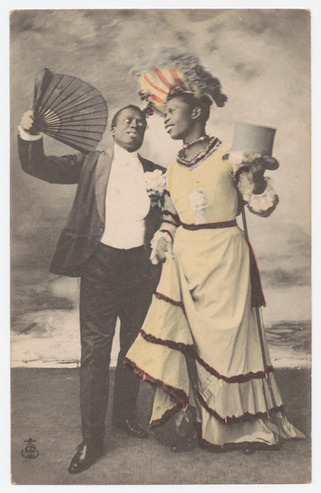
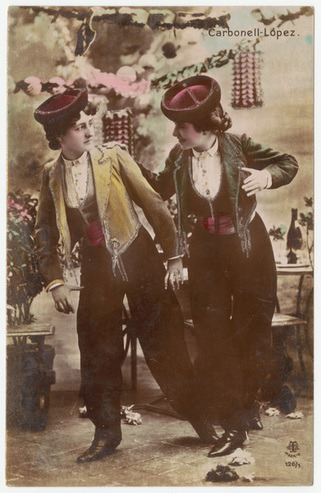

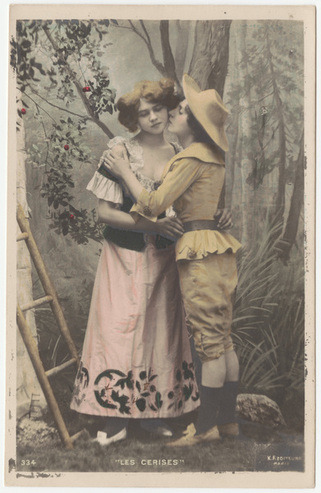

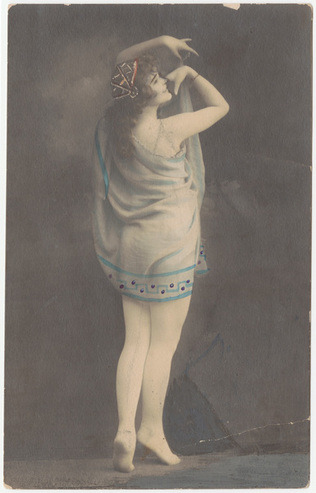



This collection of postcards of female and male impersonators and cross-dressing in Europe and the United States, 1900-1931, 1955 features copies of original postcards held by Cornell’s Human Sexuality Collection, part of Cornell Library’s Division of Rare and Manuscript Collections.
4K notes
·
View notes
Photo
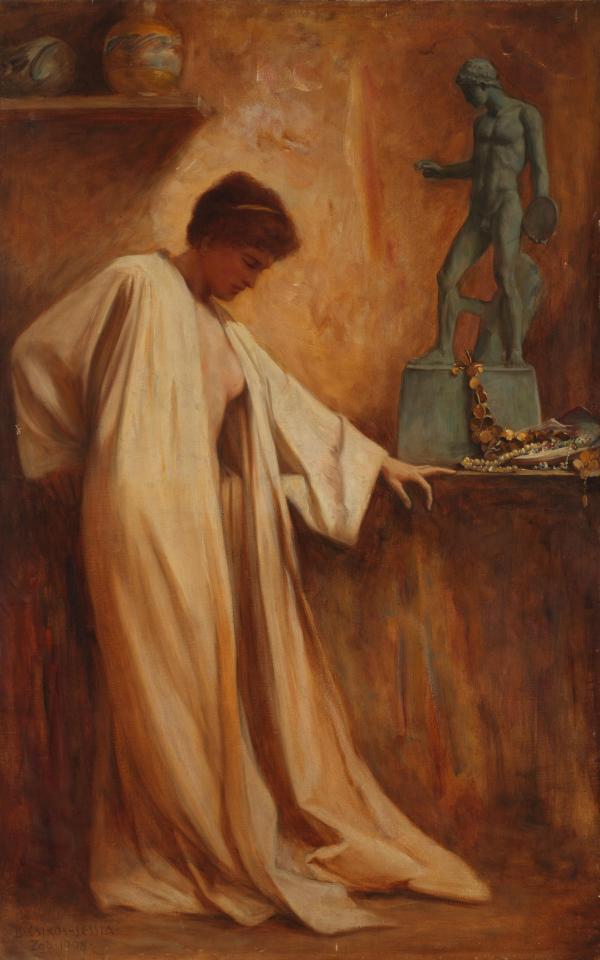
Sapho, 1908 by Bela Čikoš Sesija (Croatian, 1864–1931)
1K notes
·
View notes
Text
You've heard of "and there was only one bed", now get ready for
"and there was only one pot, which we both ejaculated into because we're male Hindu deities whose friendship was so strong that the modern Sanskrit word for friend evolved from our name; we govern the phases of the moon through the power of gay sex; and we ride together in a chariot pulled by swans. Also we co-fathered two sons from the semen pot."
#we are talking about Mitra and Varuna in case that wasn't clear#absolutely iconic ancient Indian deities who honestly ruled#and before anyone starts - this post is obviously a simplified and tongue in cheek take appropriate for the platform we are sharing it on#genuinely though i really loved researching these two#mitra and varuna#mitra#varuna#lgbtq history#queer history#listen to episode 11 of Queer at Last if you want to know more about these two btw!
9 notes
·
View notes
Text
We're not saying that "and there was only one pot" should have been the fanfic trope we all latched onto, but we're also not NOT saying that 👀
Listen to our latest episode (available wherever you get your podcasts) now to find out more stories about Mitra and Varuna, Indian deities of intimate friendship and also big, big, crocodiles.
#queer history#lgbtq history#queer at last#hinduism#mitra and varuna#mitra#varuna#queer mythology#queer religion#ancient india#lgbtq#parenthood#surrogacy
1 note
·
View note
Text
hi there queer folks of tumblr.com! i'm doing a personal research paper of my own choosing for a university class on queer community and queer movements in history. mainly, i want to know how much queer folks know and where they know it from!
Feel free to spread this around as much as possible to get a bigger sample size! I'll be creating a place with results and gathered information as part of this paper (and i'll also post it here!!)
26 notes
·
View notes
Text
My feeling is that not enough people know about Mitra-Varuna, two ancient Indian deities who redefine friendship - riding around on a giant crocodile, controlling the oceans, ejaculating into clay pots and conceiving children together… you know, just bros being bros 👀
Listen now to episode 11 as we talk about the LGBTQ+ significance of these figures and share some of the stories surrounding them!
#queer history#lgbtq history#queer at last#podcast#history podcast#gay history#mitra#varuna#hinduism#rig veda
5 notes
·
View notes
Photo

Thomas Benrimo – Sappho (1957)
311 notes
·
View notes
Text
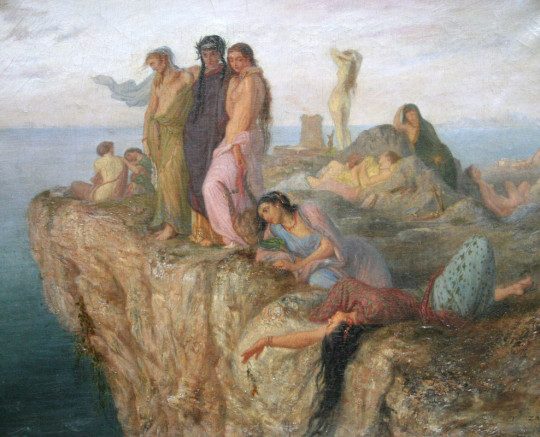
Antoine-Christian Zacharie called Tony Zac – Female Companions of Sappho (ca. 1868)
574 notes
·
View notes
Text

Statue of poet Sappho (2nd century CE, Smyrna) at the Istanbul Archeological Museum.
204 notes
·
View notes
Text

Death of Sappho, Miquel Carbonell Selva, 1881
6K notes
·
View notes